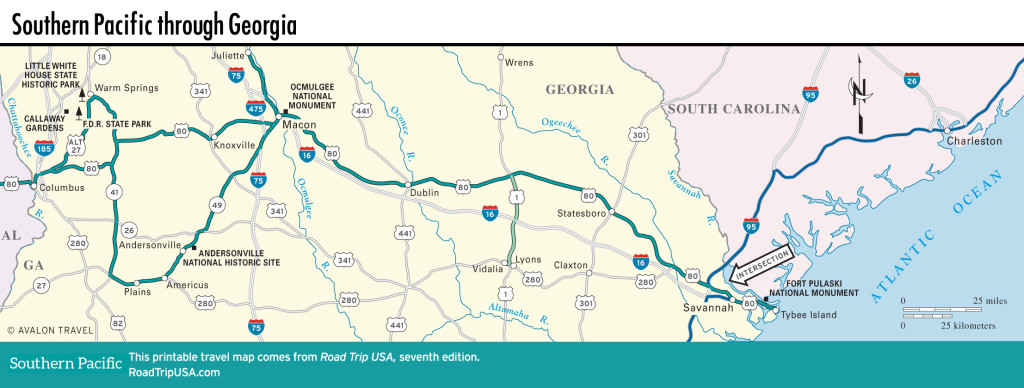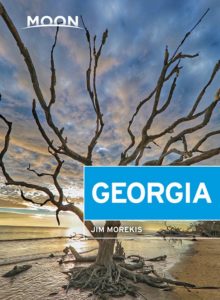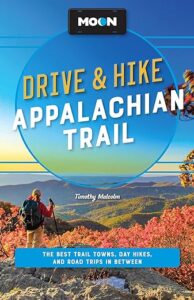Bonaventure Cemetery and Fort Pulaski
Bonaventure Cemetery
Whether or not you got obsessed with Midnight in the Garden of Good and Evil, the book that put Savannah back on the map in the 1990s, you’ll enjoy visiting Bonaventure Cemetery (330 Bonaventure Rd., daily, free), which features prominently in the story. Located east of Savannah proper, north of US-80 via Whatley Avenue, it is simply one of the most evocative corners of this characterful part of the country, where majestic old trees draped in mossy strands stand over abundant azaleas and all manner of monuments and memorials. No less a figure than naturalist John Muir, who camped here for a while immediately after the Civil War, called it “one of the most impressive assemblages of animal and plant creatures I have ever met.” Songwriter Johnny Mercer of “Moon River” fame is buried here, along with centuries’ worth of other Savannahians.
Fort Pulaski National Monument
East of Savannah the landscape gets peaceful quickly. Amid the contemporary calm stands Fort Pulaski National Monument (912/786-5787, daily, $10), 14 mi (22.5 km) east of Savannah on US-80, a well-preserved stone-and-brick fortress completed in 1848 at a commanding site at the mouth of the Savannah River. Its prominent island site originally held colonial-era fortifications, which were demolished by a hurricane in 1804 and replaced by the architecturally impressive pentagon-shaped bulwark that survives in its battered and breached state today, surrounded by a moat and many acres of grassy lawn.
Beginning in 1829, construction of Fort Pulaski, proclaimed “as strong as the Rocky Mountains,” took 18 years, used 25 million bricks, and cost just over a million dollars (which is equivalent to something close to $5 billion these days, as a share of the U.S. GDP!). During the Civil War, its seven-foot-thick walls withstood bombardment by the Union forces’ new rifled cannon for only 30 hours, prompting the fort’s surrender in April 1862.
Beautiful and endlessly photogenic, besides the military history Fort Pulaski preserves abundant natural habitat for all sorts of splendid creatures. Eagles, falcons, and songbirds fly about, while alligators, manatees, and turtles cruise through the lazy waters of the moat and nearby wetlands.
Map of the Southern Pacific Route through Georgia

















